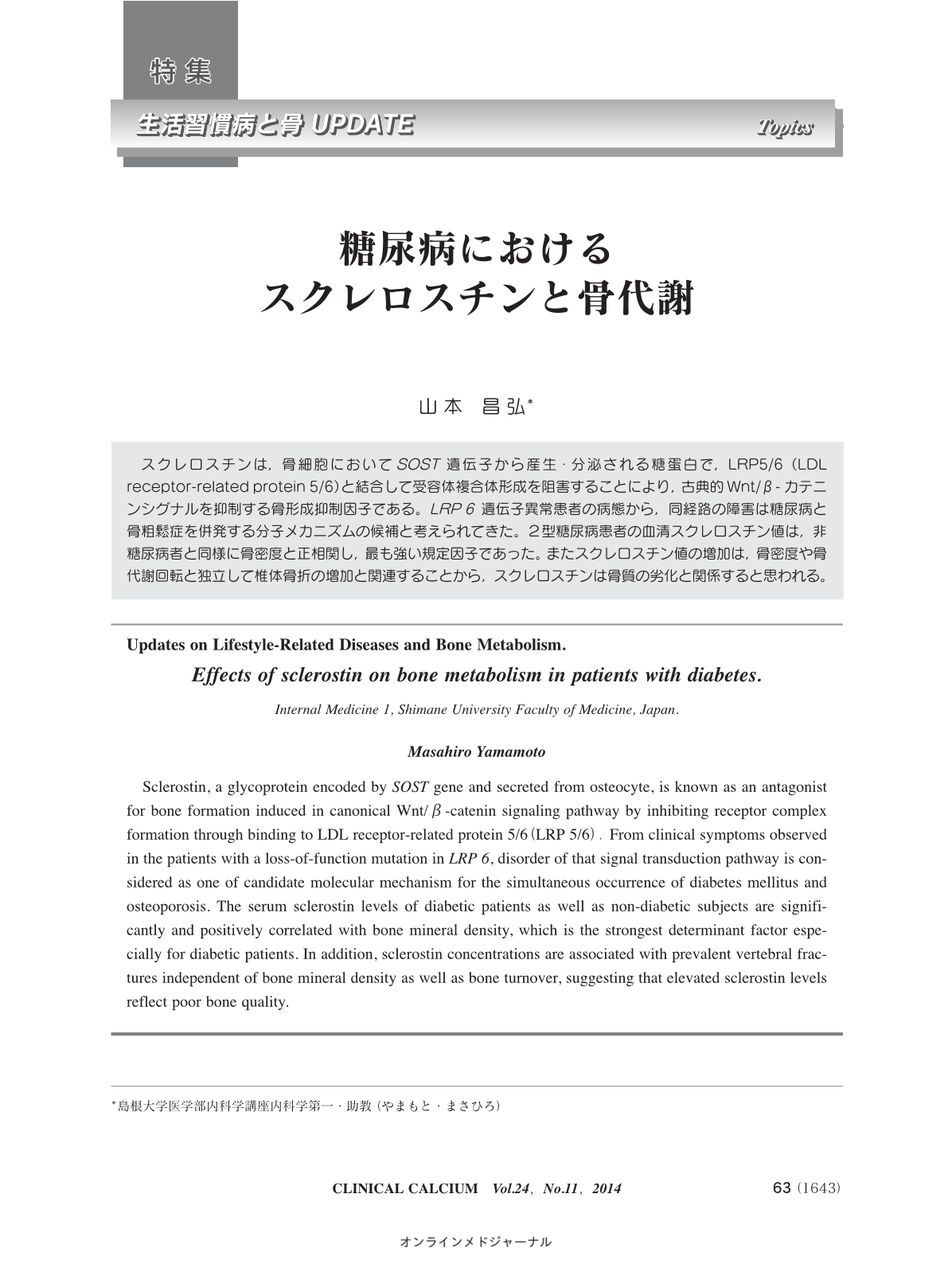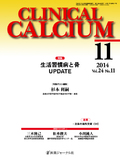Japanese
English
- 有料閲覧
- Abstract 文献概要
- 1ページ目 Look Inside
- 参考文献 Reference
スクレロスチンは,骨細胞においてSOST遺伝子から産生・分泌される糖蛋白で,LRP5/6(LDL receptor-related protein 5/6)と結合して受容体複合体形成を阻害することにより,古典的Wnt/β-カテニンシグナルを抑制する骨形成抑制因子である。LRP 6遺伝子異常患者の病態から,同経路の障害は糖尿病と骨粗鬆症を併発する分子メカニズムの候補と考えられてきた。2型糖尿病患者の血清スクレロスチン値は,非糖尿病者と同様に骨密度と正相関し,最も強い規定因子であった。またスクレロスチン値の増加は,骨密度や骨代謝回転と独立して椎体骨折の増加と関連することから,スクレロスチンは骨質の劣化と関係すると思われる。
Sclerostin, a glycoprotein encoded by SOST gene and secreted from osteocyte, is known as an antagonist for bone formation induced in canonical Wnt/β-catenin signaling pathway by inhibiting receptor complex formation through binding to LDL receptor-related protein 5/6(LRP 5/6).From clinical symptoms observed in the patients with a loss-of-function mutation in LRP 6, disorder of that signal transduction pathway is considered as one of candidate molecular mechanism for the simultaneous occurrence of diabetes mellitus and osteoporosis. The serum sclerostin levels of diabetic patients as well as non-diabetic subjects are significantly and positively correlated with bone mineral density, which is the strongest determinant factor especially for diabetic patients. In addition, sclerostin concentrations are associated with prevalent vertebral fractures independent of bone mineral density as well as bone turnover, suggesting that elevated sclerostin levels reflect poor bone quality.



